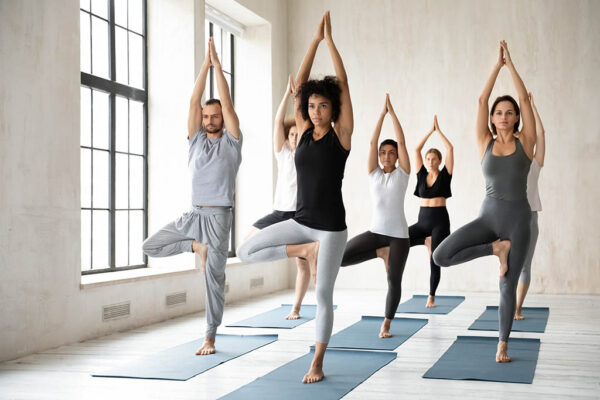Did you know, according to the Centers for Disease Control and Prevention (CDC), 2 out of 3 Americans are not meeting physical activity standards? The American College of Sports Medicine (ACSM), recommends 150 minutes of moderate intensity exercise or 75 minutes of high intensity exercise a week. This recommendation can be met through 30-60 minutes of moderate intensity exercise five days a week or 20-60 minutes of vigorous-intensity exercise three days a week. Why are so many people inactive when most know the many health benefits that come from even doing less strenuous or moderate exercise? Below is a list of common excuses for not exercising regularly and ways to overcome those barriers.
Hurdle #1: Do not have enough time to exercise or find it inconvenient to exercise
- Identify available time slots by monitoring daily activity for one week. Find at least three 30-minute time slots where you could fit in physical activity.
- Get creative on how to add physical activity into your daily routine. For example, ride your bike to work, walk to the grocery store, choose a walking meeting at work when possible, etc.
- For new parents, trade babysitting time with a friend or neighbor who also has small children.
- Find ways to exercise with children, play tag, get a dance aerobics DVD that the whole family can participate in, bring dumbbells to the park and workout while the kids play in the park.
- If you are crunched for time, choose a high intensity activity such as running or jump roping.
Hurdle #2: Lack of self-motivation or enjoyment
- Add time for exercise onto your weekly calendar to keep you motivated.
- Keep workout clothes in your car, if you’re early to something put on your shoes and walk instead of waiting in your car.
- Find a friend to exercise with, hold each other accountable to show up.
- Workout with a trainer or in a group exercise class. A personal trainer will help keep you motivated by tracking change and pointing out improvements.
- Try new things, maybe the gym isn’t the place for you but joining a soccer league is!
Hurdle #3: Lack confidence in their abilities to be physically active or fear being injured
- Start by working with a personal trainer or taking a group exercise class where a foundation can be made.
- Exercise with a friend who is knowledgeable and already exercising regularly.
- Begin with simple exercises and build up to more complex movements.
- Take up an activity where injuries are less likely, such as swimming.
Hurdle #4: Lack encouragement, support, or companionship from family and friends
- Tell friends and family why exercise is important and ask for their support.
- Invite friends and family to exercise with you or plan social activities involving exercise. Examples include a group hike, a pickup game of basketball, a fun run, etc.
- Develop friendships with physically active people. Join a run club or hiking group to develop relationships with people who share similar interests to you.
Hurdle #5: Do not have parks, sidewalks, bicycle trails, or safe and pleasant walking paths convenient to their homes or offices
- Identify inexpensive, convenient resources available near your home or work. Most cities provide free or very inexpensive exercise classes in a community center. Check to see if your worksite provides any physical activity programs or subsidizes gym memberships.
- Choose activities that don’t require a lot of room or equipment, use the internet as a resource for finding exercises that can be done at home.
- If the weather is bad, find an indoor activity, such as walking the mall for an hour. This activity is free (As long as you don’t go into any stores!) and can be done when it’s dark or if the weather is bad outside.
- When traveling, carry a jump rope in your suitcase or stay in hotels that offer gym amenities.
The bottom line is physical activity needs to be made a priority if you’re going to meet the ACSM physical activity recommendations and reap all the benefits that come with regular exercise. While everyone goes through busy seasons, it’s important to keep your health at the forefront of your mind. There are many resources out there to assist with this, use them!
Resources:
CDC. (2011). Overcoming Barriers to Physical Activity. https://www.cdc.gov/physicalactivity/basics/adding-pa/barriers.html
ACSM. (2011). ACSM Issues New Recommendations of Quantity and Quality of Exercise. http://www.acsm.org/about-acsm/media-room/news-releases/2011/08/01/acsm-issues-new-recommendations-on-quantity-and-quality-of-exercise
About the Author:
Deanna received her bachelor’s degree in Kinesiology with an emphasis in Adapted Physical Activity from San Jose State University. She is also a Certified Exercise Physiologist through the American College of Sports Medicine. Deanna manages all elements of BaySport’s Biometric Screening events, promotes and coordinates the Health Coaching programs, and provides ongoing support for BaySport Wellness services. During her free time, Deanna enjoys spending time outside. Hiking, swimming, and camping are some of her favorite outdoor activities.



